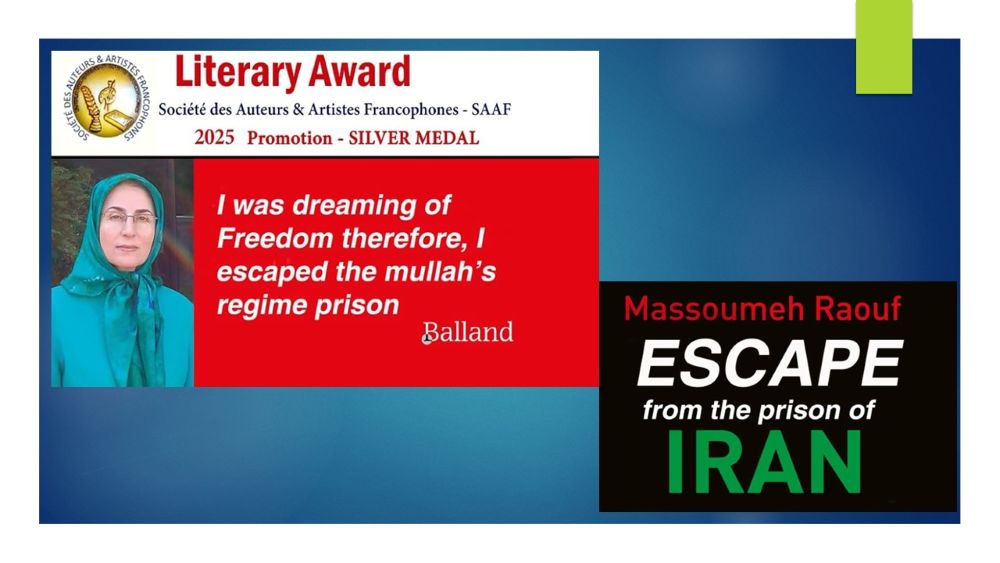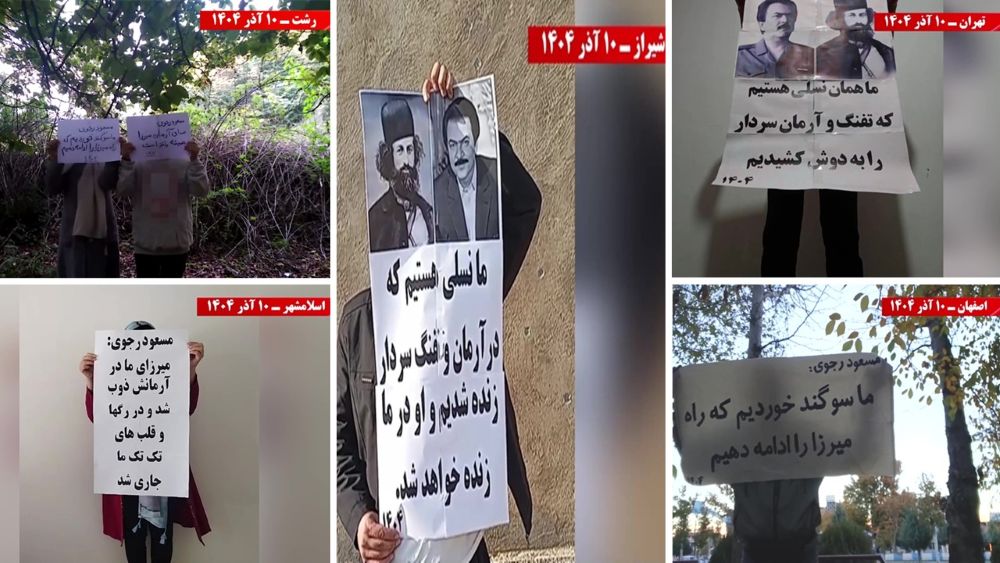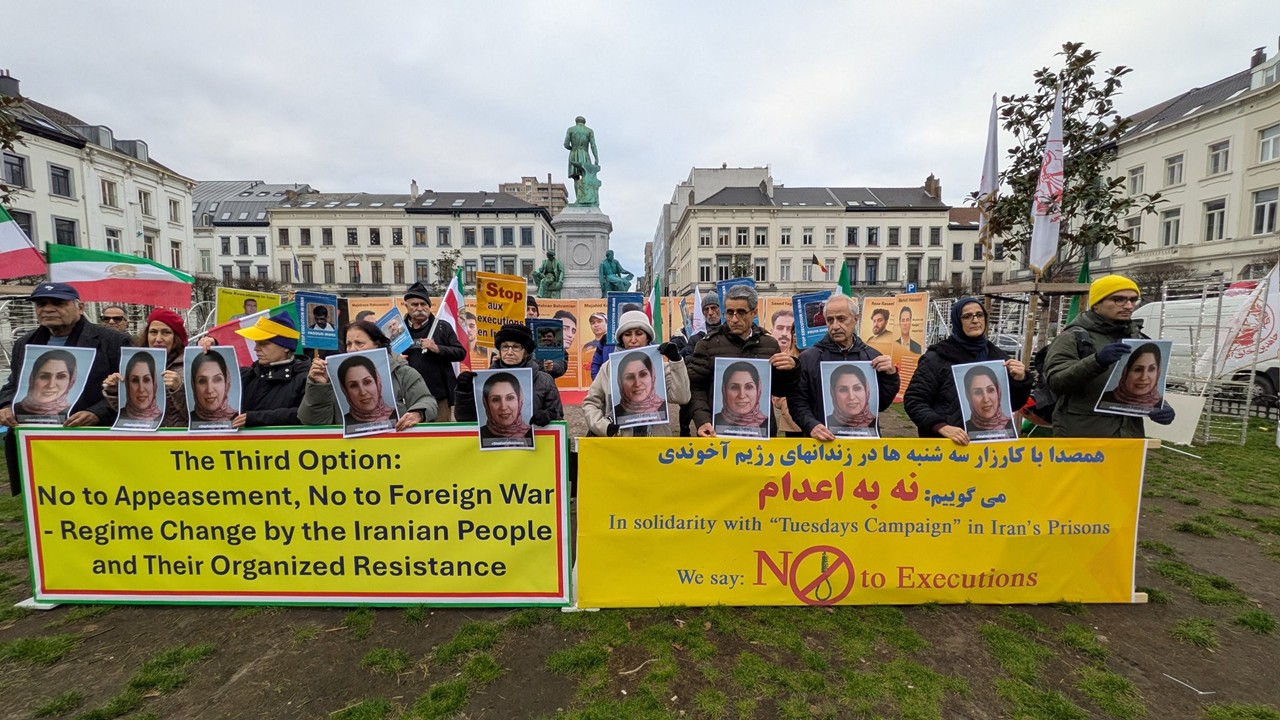Strike of Truck Drivers – bond to Iranian people’s national resistance and the political alternative
These days, we are witnessing labor protests in every part of the country. On a daily basis, there are reports on some guilds’ strike to achieve their rights. In the past few days, a large number of truckers in various cities of Iran have stopped working and went on strike to pursue their rights. Photos and pictures of these strikes show their expansion and continuation.
The Iranian truck drivers went on a nationwide strike on Tuesday, May 22, 2018, in more than 140 cities, protesting the mullahs’ regime. They protested against low wages; high taxes; lack of job security; mismanagement of their facilities; worsening living conditions; and deteriorating sources of revenue along with rising costs of maintenance, as the result of Iran’s regime monetary mismanagement, which has driven down the value of Iran’s currency, including their earnings. Truck-drivers, and especially fuel truck-drivers, refused to continue loading freight, and parked their trucks in parking lots in cities and even on highways, chanting slogans against the authorities for mismanagement and for plundering their revenues. The strike by the fuel truckers led to fuel shortages in gas stations across the country, triggering a rush to the fuel stations and long lines for fuel rationing.
Iranian social media users vastly shared details and images of Tuesday’s strike in social media. The evidence shows the involvement of truckers in the strikes, in the provinces of Fars, Hormozgan, Isfahan, Kerman, Khorasan Razavi, Lorestan,Qazvin, Ilamand many other cities.
Striking drivers declared that they would continue their strike until their demands are met. The strike is now spreading to other cities and provinces.
The significant role of transportation in Iran:
Given the vast territory of Iran, cargo transportation has played an important role in shaping economic infrastructure and development in the country since 1940. Truck transport has a key role for the distribution of goods and commodities from producer to consumer and for transferring industrial materials to provinces where production is located far from consumption areas, so the mullahs are facing a grave problem due to the truck drivers’ strike.
So far, the truck drivers’ strike has proven three important matters:
- Being organized: The strike, simultaneously, began in 93 cities and 25 provinces and then spread to 168 cities in 29 provinces, indicating an excellent organizing and coordination that would secure the strikers from a range of deceptive plans and hollow threats of the regime. Since the promotion of a strike to a nationwide movement increases the level of demands, it broadens domestic and international support, practices more active informing systems and, therefore, creates a more effective supportive umbrella.
- The explosive condition of the society: While the regime has mobilized and concentrated its entire capabilities to prevent any social unrest, including its suppression forces and propaganda apparatus, the formation of truck drivers strikes indicates the depth of the people’s dissatisfaction regarding the regime’s policies and also the readiness of people for uprising. Particularly, due to the strikers’ steadfastness, other guilds and social strata join and support them.
- The failure of the filtering the Telegram Apps: the coordinated and nation-wide strike of truck drivers took place after filtering Telegram, aimed at disrupting the popular communication. Therefore, another clear message sent by the truck drivers’ strike is the failure of the regime in this arena and the ability to solve the problem of communications by strikers. The same sample represents the perspectives of other social strikes and protests.
Therefore, now, the clerical regime finds itself surrounded by protests more than ever before. The strikes of marketers and traders continue in different ways. The protests and strikes of the plundered people by the regime’s financial institutes, workers of various industries, the municipalities staff, the retirees, nurses, teachers and … are ongoing.
More organized, radical and broader protests portray the prospects of the future and the regime’s nightmares. Particularly, the PMOI’s Network inside Iran is very active, and the mullahs and government officials always admit to the role of PMOI in forming and conducting the protests. Various social strata, which are intensely against the Mullahs’ regime, constantly respond positively to the calls of the PMOI and the National Council of Resistance under Mrs. Rajavi’s leadership and continue their protests, which ultimately will pave the path for a nationwide uprising that will lead to the overthrow of the mullahs’ regime in Iran.
Mahdavi is an Author, Reporter, and Opposition Activist to the Iranian regime. He writes articles for http://www.iranfreedom.org/en/



